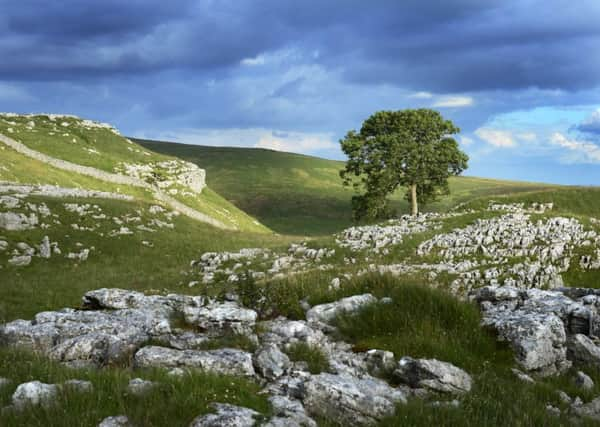Sir William Worsley: Think long-term to grasp chance for new woods


We also have many protected areas, such as Conservation Areas and Green Belts, that have done a great job in protecting our heritage and stopping urban sprawl.
Britain affords us views and landscapes that rival any in the world, but we also have too many places that have been spoilt, suffering deprivation and under-investment.
Advertisement
Hide AdAdvertisement
Hide AdWe also live at a time of high house prices and have a desperate need of affordable new homes suitable for young families.
We face two great challenges.
We need new homes and new places of work.
At the same time, we must find ways to improve and sustain an environment that has historically so often been spoilt by poor quality development, mining, or heavy industry.
One way to do this is by planting trees and woods, both in the existing landscape and as an integral part of any new development.
We have an excellent example of how this can be successfully achieved in the National Forest, situated in a once-scarred area of the Midlands.
Advertisement
Hide AdAdvertisement
Hide AdParticularly in times of austerity, one can make the case that we should invest to have the biggest and most lasting impact.
Environmentally-led regeneration, such as the planting of trees, satisfies this imperative and provides long-term, multi-functional benefits for our economy and people.
The Natural Capital Committee report of 2015 bears this out, suggesting that planting trees on the edge of major towns and cities would at once generate tremendous recreational benefits, contribute to cutting greenhouse gasses, and provide a net positive economic impact of £550m per year.
At a cost-benefit ratio of at least five to one, planting trees makes sense and can support genuinely green growth.
Advertisement
Hide AdAdvertisement
Hide AdThis has again been demonstrated in the National Forest, covering parts of Staffordshire, Derbyshire, and Leicestershire where forest cover has increased from six per cent to more than 20 per cent in just 25 years, restoring the damaged industrial landscape, providing the setting for new homes, and stimulating a new economy based on tourism and recreation.
It has created a place where people want to live and work, with access to greenspace within easy reach of people’s homes, thus transforming the landscape, economy and lives.
Trees, a natural part of any landscape, improve vistas, giving people enjoyment even as they can hide buildings and infrastructure we don’t necessarily wish to see.
Small woods and parks can also break up large urban environments and reduce temperature extremes in towns and cities. Our capital city, London, is an excellent example, its many parks, gardens and trees offering abundant green space, thus creating a city in which people wish to live.
Advertisement
Hide AdAdvertisement
Hide AdBut tree planting is a long-term venture that requires vision and investment over a 50 to 100-year timescale: a brave investment decision for a politician on a five-year election cycle.
For too long we have under-valued the creation of new woodlands and what these can do for our economy, environment and communities, and as a result tree planting levels across the country are dwindling.
I’m pleased to say that the National Forest has bucked this trend, continuing to create at least 100 hectares of new planting each year across its 200 square miles.
We now have a chance to create new investment mechanisms for tree planting, with talk of a Green Brexit leading to innovative thinking on agri-environment schemes, and 2017 being the 800th anniversary of the 1217 Tree Charter.
We must grasp this opportunity.
Advertisement
Hide AdAdvertisement
Hide AdTrees help control pollution, stimulate the economy, improve quality of life and support wildlife.
If you factor in all these benefits, you get a very good return on investment that continues to pay back.
So, as we look at investment plans for our own Northern Powerhouse, the Midlands Engine and for other parts of the country we must be bold, plan for the future and give priority to the value of our environment in driving our economic plans.
Sir William Worsley is a past president of the Country Land and Business Association.